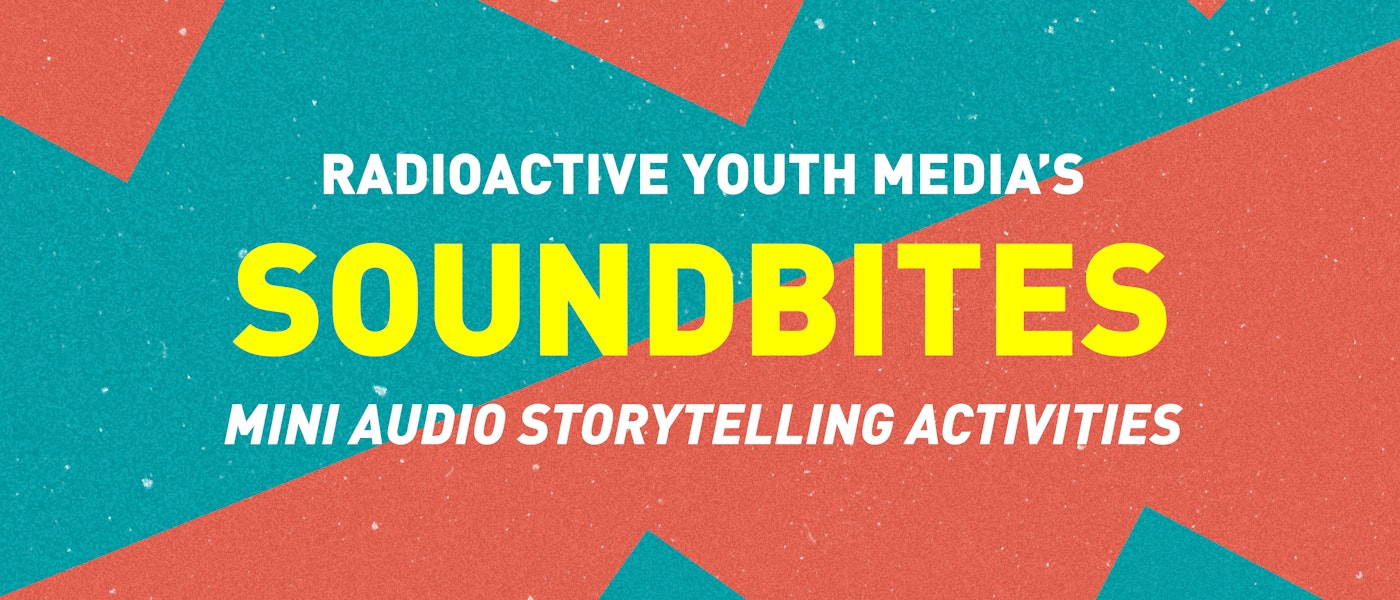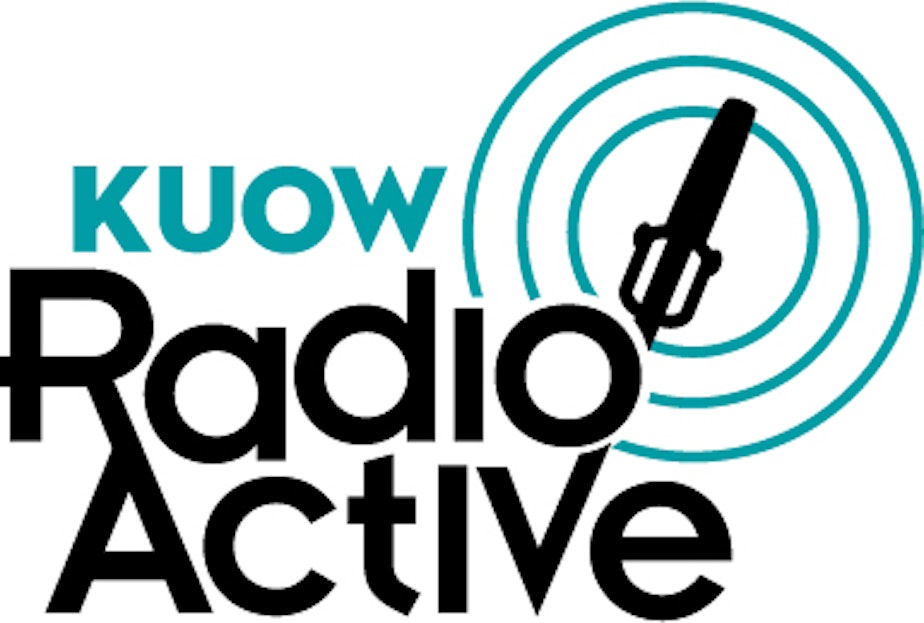SoundBites Activity #12 - Audio tours
In this activity, you’ll listen to examples of audio tours, and record your own guided tour of a place you know well.

KUOW’s RadioActive Youth Media is excited to share 12 bite-sized audio storytelling activities for teens and pre-teens.
Developed for at-home learning use during the pandemic, these self-directed activities take about 30 minutes to complete, and can be done in any order either alone or with a partner. If you're looking for a place to start, our favorites are #11: Short Lists and #8: Audio Scavenger Hunt. We hope you engage in whatever way feels meaningful to you. To share your work and join the community conversation on social media, use the hashtag #RASoundBites.
What is RadioActive Youth Media? RadioActive Youth Media is an award-winning radio journalism program for teens at KUOW Public Radio in Seattle, Washington. We offer year-round introductory, advanced, and community programs related to audio storytelling and radio journalism. Young people's voices aren't heard enough in the media - we're here to change that!
I'm an educator -- where can I find podcasting resources for my classroom? Check out RadioActive's Public Resources for Educators folder. We've got lesson plans, tip sheets, and links galore. Click on the "Welcome and Helpful Links" document to get started. And if you are an educator in the Pacific Northwest, RadioActive offers free audio journalism workshops to youth-serving organizations. Email us at radioactive@kuow.org for more.
I want more! Find more information about audio storytelling and radio journalism at NPR Training and Transom.org. You can learn about making your own podcast from start to finish with the Radio Rookies DIY Toolkit, the YR Media DIY Toolkit, and Starting Your Podcast: A Guide For Students from NPR. And for weekly creative audio prompts sent straight to your inbox, we love the Audio Playground newsletter by Chicago audio producer and educator Sarah Geis.
If you gave a guided tour of the street you live on, what stories would you share? What would folks learn about you? If your little siblings gave a tour of the same street, how might they do it differently than you? In this activity, you’ll listen to examples of audio tours, and record your own guided tour of a place you know well.
In this activity, you’ll listen to examples of audio tours, and record your own guided tour of a place you know well.
“Listicles” are all the rage over at BuzzFeed and other print outlets. Can you make a compelling audio story out of nothing but a list? In this activity, you’ll listen to examples of Short List stories, and then record your own.
“Listicles” are all the rage over at BuzzFeed and other print outlets. Can you make a compelling audio story out of nothing but a list? In this activity, you’ll listen to examples of Short List stories, and then record your own.
Mixing is the process of editing and arranging audio clips in a way that sounds seamless and natural to a listener. In this activity, we'll go step-by-step through the process of audio mixing, and then you'll have the chance to practice.
Mixing is the process of editing and arranging audio clips in a way that sounds seamless and natural to a listener. In this activity, we'll go step-by-step through the process of audio mixing, and then you'll have the chance to practice.
A scene is a moment in an audio story that takes the listener into the center of the action using sound. In this activity, you’ll record ambiance and active tape to make your own audio scene.
A scene is a moment in an audio story that takes the listener into the center of the action using sound. In this activity, you’ll record ambiance and active tape to make your own audio scene.
What’s the sound of the color red? What about the sound of love? Of regret? Join us on an audio scavenger hunt.
What’s the sound of the color red? What about the sound of love? Of regret? Join us on an audio scavenger hunt.
Do you want to report on your community but you don’t know where to start? In this activity, we’ll identify the elements of a great story, and then draw “Identity Maps” to generate story ideas from our own lives and communities.
In this activity, we’ll identify the elements of a great story, and then draw “Identity Maps” to generate story ideas from our own lives and communities.
A Rohingya teen escaped genocide in Myanmar. This is how he ended up on Mercer Island. In this activity, you will have the opportunity to practice active listening, think critically about story structure, and learn about the Rohingya refugee crisis — all while listening to a RadioActive youth-produced story!
In this activity, you will have the opportunity to practice active listening, think critically about story structure, and learn about the Rohingya refugee crisis — all while listening to a RadioActive youth-produced story!
Stories are everywhere, we’re just not always listening. In this activity, we walk step-by-step through the process of conducting an audio interview.
Stories are everywhere, we’re just not always listening. In this activity, we walk step-by-step through the process of conducting an audio interview.
At its most basic, an interview is about asking great questions and listening closely to the answers. Sounds simple, sure, but being an effective interviewer is a skill that takes practice to develop. In this activity, we’ll listen to two radio interviews and identify the kinds of questions we can ask to get interesting (and not so interesting) answers.
At its most basic, an interview is about asking great questions and listening closely to the answers. In this activity, we’ll listen to two radio interviews and identify the kinds of questions we can ask to get interesting (and not so interesting) answers.
Radio producers like to say that “radio is the most visual medium.” How can that be? In this activity, you’ll explore three stories and the question: What makes radio different from other mediums, like print and video?
Radio producers like to say that “radio is the most visual medium.” How can that be? In this activity, you’ll explore three stories and the question: What makes radio different from other media?
We want to hear from you! In this activity, you’ll learn how to record broadcast-quality audio on your smartphone. Then, we hope you’ll respond to one of our prompts in a recording and send it to us. If you do, we may use it in an upcoming episode of the RadioActive Podcast.
In this activity, you’ll learn how to record broadcast-quality audio on your smartphone. Then, we hope you’ll respond to one of our prompts in a recording and send it to us.
Humans are drawn to stories in part because they are predictable. Stories take on recognizable patterns, and we find comfort and meaning in those patterns. The way a story is organized, or it's pattern, is called its structure. In this activity, you'll use the Seven Sentence Story tool to write your own short stories using a common story structure. Then, you'll practice close listening with two audio stories, and reflect on their structures.
In this activity, you'll use the Seven Sentence Story tool to write your own short stories using a common story structure. Then, you'll practice close listening with two audio stories, and reflect on their structures.

RadioActive Youth Media creates a space where young people can discover public radio journalism and gain access to the skills, community and institutional resources that spur their growth as media makers. Through their stories, listeners of all ages gain a deeper understanding of young people whose voices are rarely heard by the greater public.